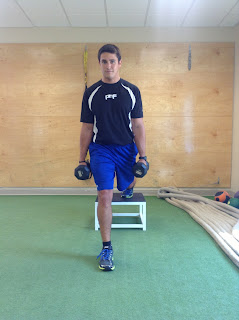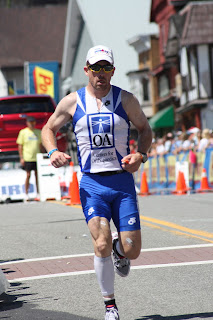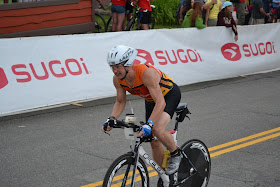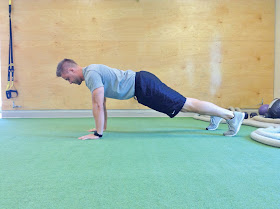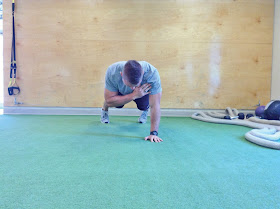It’s
not just a triathlon. Not’s not another race. It’s an ironman competition and
that means the biggest competition is inside and not the other racers. It’s
more than running, more than biking and more than swimming…it’s all three.
“The
Ironman is more an individual pursuit. You are racing against a couple other
thousand people, but you’re racing against yourself,” said coach and athlete
Bob Turner.
Athletes
Jason Leggett, Jason Stokes and Turner are like most athletes when they get
together. They share stories, are supportive and they share their successes.
Bob Turner coaches Stokes and also runs the Ironman competitions himself.
Leggett prefers to workout and compete more on his own.
They
all have competed in Ironman competitions, but do more half-Ironman
competitions, which is still a grueling 70.3 miles.
An
Ironman competition consists of a 2.4-mile swim, a 112-mile bike ride and a
26.2-mile run. For those counting, that’s 140.6 miles total distance. The race
is over at midnight whether the athlete finishes or not. There are 25 full
Ironman competitions around the world and 12 are in the United States.
“There
are four main distances. The sprint, Olympic triathlon, half Ironman and full
Ironman,” said Turner. “Very few will sign up (the first time) and try the full
Ironman,” he added.
“People
that do well are the ones who are good at all things,” said Leggett.
“It
ebbs and flows through the race. People who are not a superstar in any one of
the events do best,” said Turner.
Ironman
competitors think nothing about riding their bikes to South Berwick in the
morning and arriving back at home by 11 a.m. All agree that having a flexible
job helps with scheduling workouts.
Turner
owns his own company Turner Contracting. Stokes owns his own appraisal company
and Leggett is in pharmaceutical sales.
“The
fun component of this is people’s reaction,” Turner said. “You get creative
with training.” Turner signed up for the Beach 2 Beacon race in Cape Elizabeth
this year. He rode his bike there, ran the 10 kilometer race, ran back to his
bike at the start of the race, then rode home. That was his workout for the
day. “You paint a smile on and pretend it doesn’t hurt,” he said.
“Pain
is all relative,” said Leggett.
The
average yearly salary for an Ironman competitor is $168,000. To sign up for a
race is $700 and that doesn’t include airfare, food and accommodations. “You
need to have disposable income,” said Turner.
For
Leggett sometimes he wraps a family vacation around a race, other times it’s a
family vacation with a race in it, he said. All three men have families and
children. Stokes has a 15-year-old and a 1-year-old. Leggett has a 5-year-old
and Turner has a 15-year-old.
Stokes
likes when his son is proud of him and brags that “my dad’s an Ironman.”
It
takes an average of 17 hours to complete an Ironman. The longest workout is
around six hours, said Turner. They might do a one hour swim and a four hour
bike ride.
“I
don’t say ‘impossible’ anymore,” said Stokes. When he started he ran 350 feet
to his in-law’s house. The first time he ran two miles away from the house he
thought he was having a heart attack with a tight chest, numb fingers and arm
pain.
Stokes
is also a cancer survivor. In 2009 he was diagnosed with thyroid cancer. He was
just over six feet tall and weighed 267 pounds. Now he weighs 189.
“I
heard people talk about this crazy race. I generally run if someone’s chasing
me,” he said. “I float on my back well.” He couldn’t swim. People would ask him
when he was doing his first triathlon and he’d say, “never.”
In
May 2010, he did his first du-athlon, which was a run and bike. “I liked the
competitive nature of it. I have to see the big picture and have something to
strive for,” he said.
Stokes
completed his first Ironman in Lake Placid, New York in 13 hours and 49 minutes
this year.
He
began his training in November of 2012 and didn’t stop until July 29.
“He
finished with a smile on his face,” said Turner. “He couldn’t swim the length
of the pool,” Turner added. His swim took one hour and 32 minutes, but he made
up time on other parts of the race.
“It’s
a pretty empowering feeling to do 140 miles self-powered,” said Turner.
Turner,
44, began competitions in 2003, at 210 pounds, when he bought a bike. He ran
into a friend who had done triathlons. Turner started doing them and did a
sprint and Olympic race that summer. In 2006, he did his first Ironman
competition at Lake Placid. “It’s a lifestyle. It’s a healthy pursuit,” he
said. “Now I’m Bob Turner the triathlete, not Bob Turner the fat man.”
Turner
coaches with E3 Training Solutions.
It’s
an expensive sport, when the bike ranges from $600 to $12,000. “You beg, borrow
and steal the equipment the first year,” said Leggett. “Then you’ll get sucked
down the rabbit hole. You do have to have a support system,” he said. It can
cost over $10,000 to train, gear up and race, said Stokes.
Leggett,
43, said that most of the Ironman competitors are between the ages of 35 and
44. Most were athletes before. For Leggett, his brother and sister-in-law were
into racing. In 2004, he weighed 240 pounds and was a pack-a-day smoker. “They
have a division called the Clydesdale for heavier set men and Athena’s for
women,” he said. “I’m told myself, I’m going to be the fastest big man in
Maine.” He did it for a while, then stopped and gained back the weight he had
lost. He set a goal to compete in the Mont-Tremblant full Ironman. “I needed a
goal to scare the bejesus out of me,” he said.
Two
week ago, Leggett qualified for the world championship Ironman 70.3 to be held
in September 2014.
“This
leads to a cleaner eating lifestyle,” said Turner. “The fourth event is
nutrition,” he added. “A lot of your work on swim, bike and run can be for
not.”
This
past weekend the three men all participated in the Revolution3 competition in
Old Orchard Beach, an Olympic triathlon meaning they swim 1500 meters, ride 40
kilometers and run 10 kilometers.
“You
don’t need to do an Ironman,” said Leggett. “But you can have a hell of a lot
of fun training, traveling and racing.”
“Once
you do an Ironman, an hour and a half work meeting isn’t such a big deal,”
Turner said.

